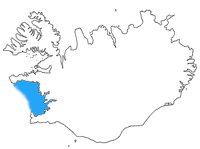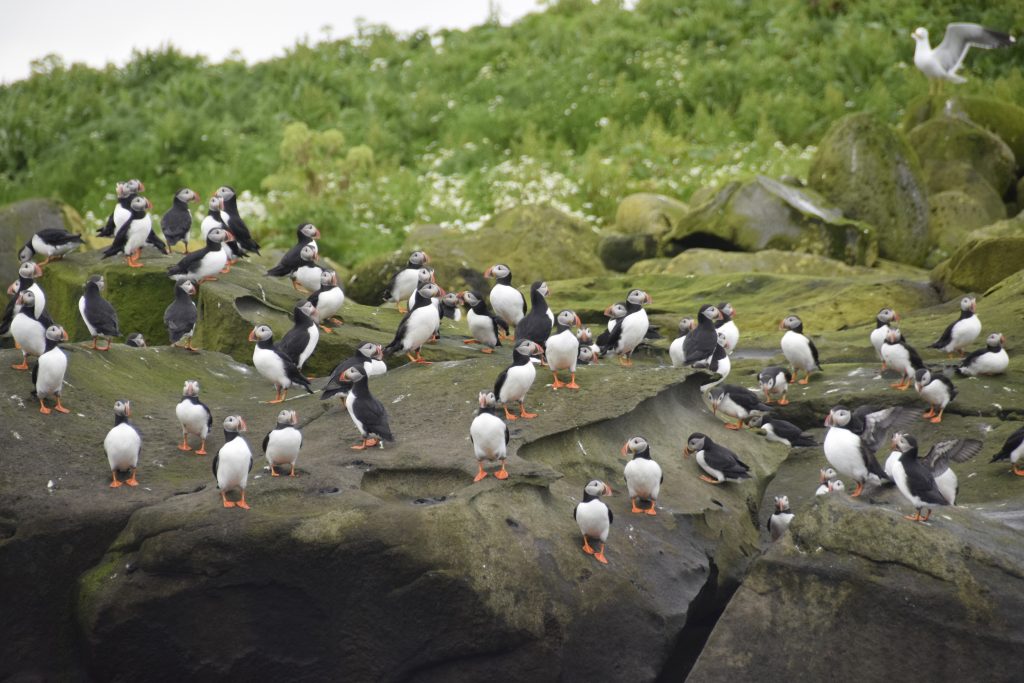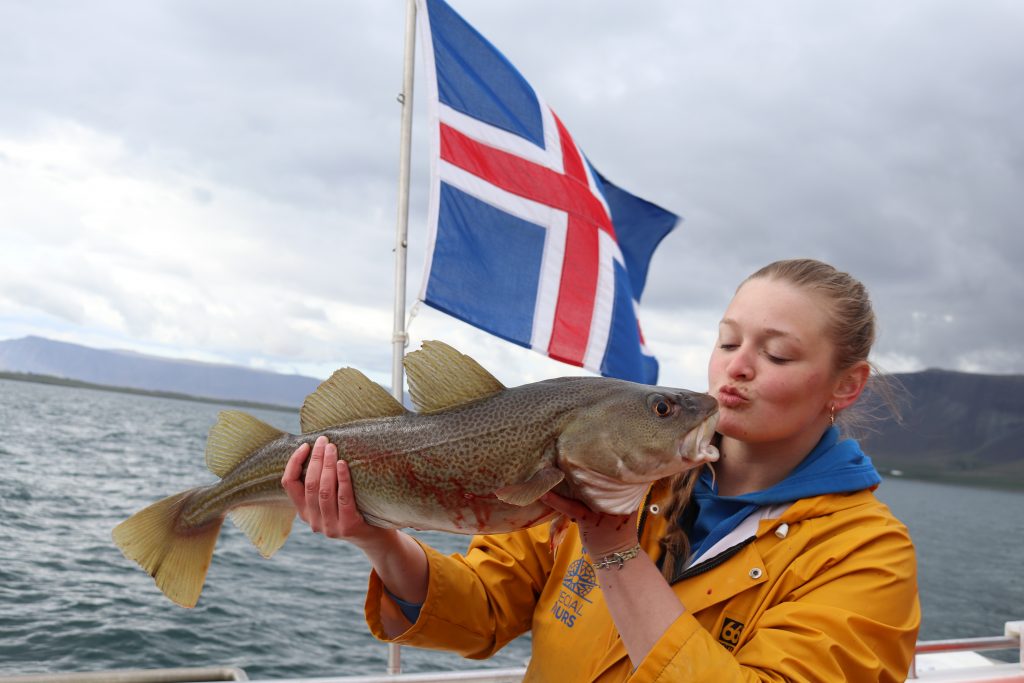Are you going to visit us in Iceland? Do not be surprised, your airplane will not bring you straight to the capital, but to Keflavik, the city that is on the far end of our whale watching home, Faxa Bay. Faxaflói, how the bay is called in Icelandic, is the largest bay in Iceland, with an area of about 4500 – 5000 km2. In good weather conditions you can see both peninsulas that are surrounding the bay. – Snæfellsjökull is always worth a picture.

Faxaflói was named after a man named Faxi, who was part of the expedition of Hrafna-Flóki, the first man to deliberately sail to Iceland with the intention to settle here. They came from Norway and stopped over in the Faroe Islands along the way. Hrafna-Flóki captured three ravens there to help him find his way to Iceland, giving him his nickname (which means Raven-Flóki). When they arrived in Iceland, Faxi suggested that this bay looked like a good place to settle near, and they named the bay after him, but they sailed onward and settled in the Westfjords. At the time, the area was full of drift ice, so Hrafna-Flóki decided to name this land Iceland.

Whale sanctuary – Faxa bay
Part of the bay has been declared a whale sanctuary and this is where we head out for our whale watching tours. Faxaflói is open to the west, and off the south and west coast of Iceland, the nutrient-rich deep waters of the North Atlantic Current upwell near the continental shelf, bringing those nutrients to the surface. Because weather around Iceland tends to be unstable, this further mixed deep waters and surface waters, ensuring the nutrients in the surface layers are constantly replenished. This means that the waters around Iceland are perfect for the growth of phytoplankton, which support the entire oceanic ecosystem and provide the perfect conditions for a wide variety of life.
The first we see, when we sail out of the old harbour of Reykjavík are the five islands of the bay: Akurey, Engey, Videy, Lundey and Therney. The word Lundi that named one of them is the Icelandic name of the Atlantic puffin. Therefore, we are able to sail for our puffin tours within minutes to the second largest puffin population in Iceland.

Atlantic puffins – July 2018
Humans have relied on fishing in the bay for thousands of years. The vast majority of the fish we catch on our Sea Angling tours are Atlantic cod, which are bottom-dwelling fish.

Sea Angling May 2020








